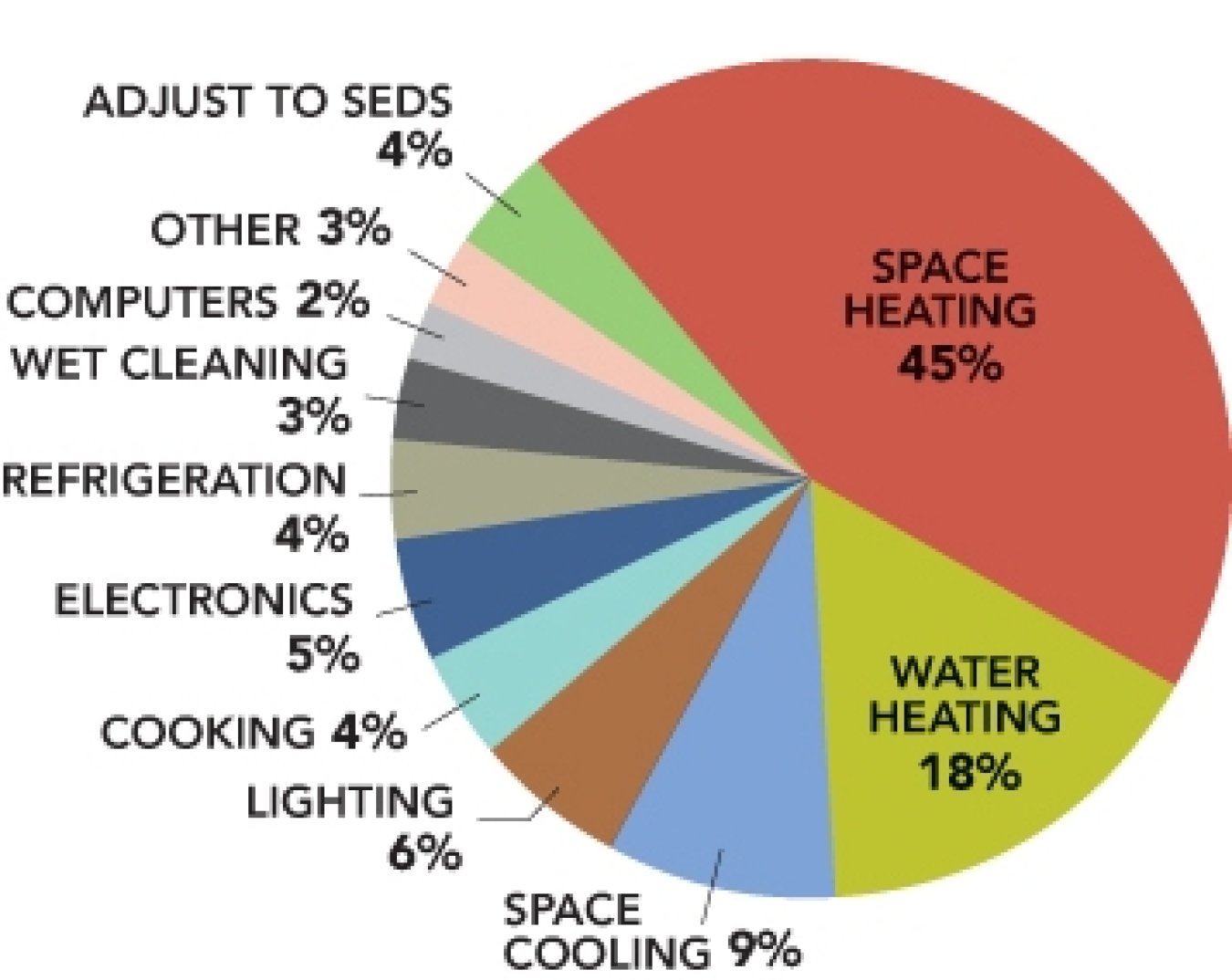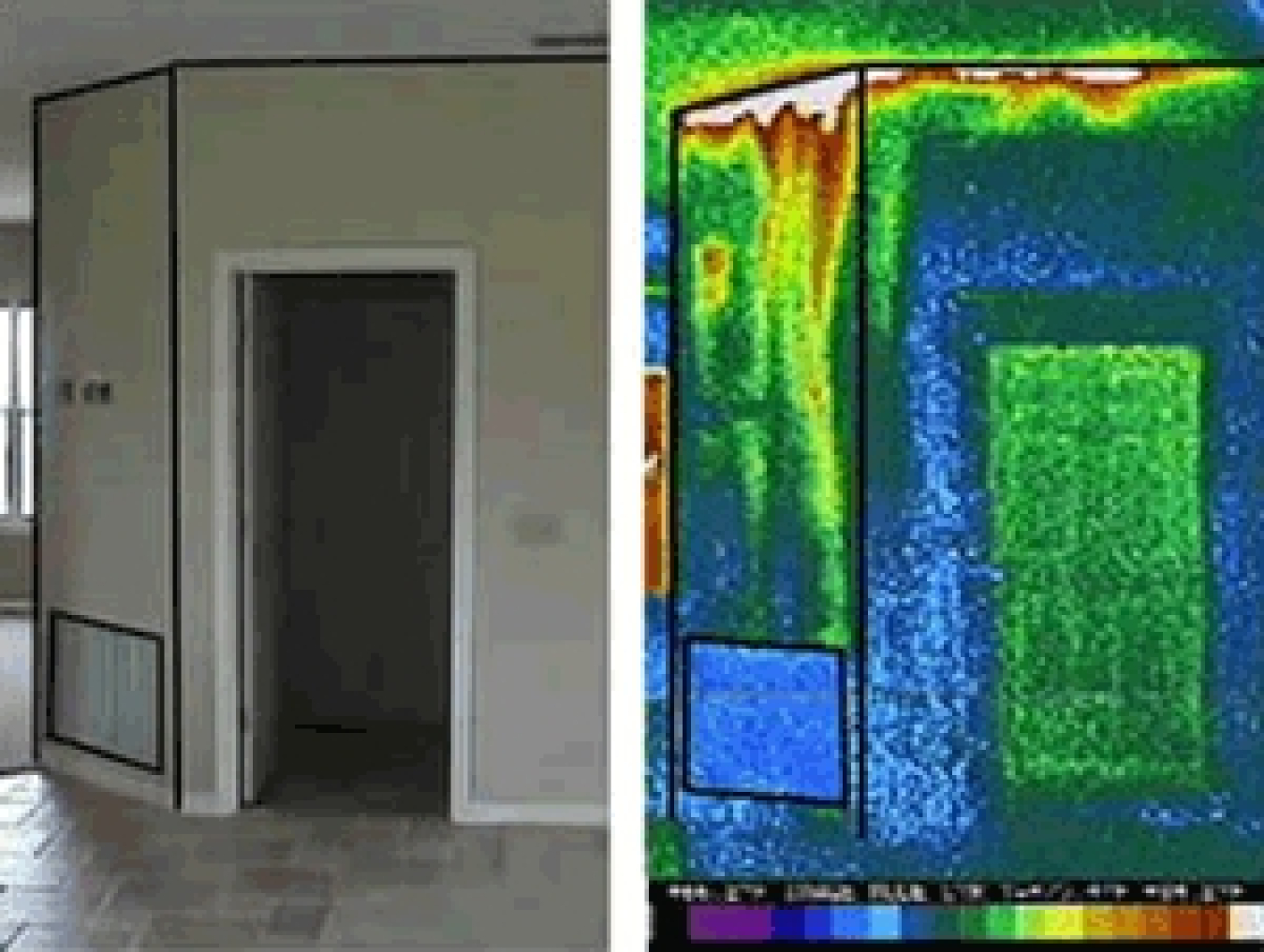Homes and commercial buildings consume 40% of the energy used in the United States. Of the $2,000 the average American spends paying for energy annually, $200 to $400 could be going to waste from drafts, air leaks around openings, and outdated heating and cooling systems. By reducing these losses through energy efficiency upgrades, you can save money and be more comfortable in your home or business.
Start with an Energy Evaluation
Completing a home or building energy evaluation, also known as an energy audit or assessment, is a wise first step to assess the ways in which your home or building consumes energy. An energy evaluation will identify what specific measures you can take to make your building more energy efficient. The evaluation might include a walk-through check-up or inspection, use of an infrared camera, a blower door, or other techniques to reveal the most effective approaches to upgrading your home or building.
Learn about professional home energy assessments, or learn how to conduct an initial home energy assessment yourself.
Understand How Typical Home Energy Improvements Can Result in a Better Building
Below are the most commonly recommended measures from a home energy evaluation that can help you save energy and save money—resulting in a better, more efficient, and more comfortable building.
How We Use Energy in Our Homes

TECHNOLOGY TACKLES ENERGY WASTE

An energy professional can use an infrared camera to pinpoint where air leaks and drafts are occurring in your home or building. These infrared photos clearly show in color where energy losses are occurring.
Typical home energy improvements
A. Seal air leaks around floors, walls, ceilings, windows, doors, and fireplaces with caulk, spray foam, and weather stripping. Warm air leaking into your home during the summer and out of your home during the winter can waste a lot of your energy dollars. The potential energy savings from reducing drafts in a home may range from 5% to 30% per year, and the home is generally much more comfortable afterward.
B. Add insulation to the attic, crawl space or basement, and exterior walls in conjunction with air sealing to help keep your house cool in the summer and warm in the winter. Increasing your home's insulation is one of the fastest and most cost-effective ways to reduce energy waste.
C. Install more energy efficient windows, doors, and skylights by looking for ENERGY STAR products and install storm windows and doors to save energy and improve the comfort of your home or building. Air infiltrates into and out of your home through every hole and crack. About 20% of this air infiltrates through openings in your windows, doors, and skylights. Storm windows alone can reduce heat loss through windows by 25% to 50%.
D. Install and set programmable thermostats that save energy by automatically regulating your home or building's temperature when you are home, asleep, or away. You can save as much as 10% a year on your heating and cooling bills by simply turning your thermostat back 10% to 15% for 8 hours.
E. Seal ducts and make sure they are straight and properly connected. Many duct systems are not insulated properly or have gaps or holes where air can leak out. You can lose up to 60% of your heated air before it reaches the register if your ducts are not insulated and they travel through unheated spaces such as an attic or crawlspace.
F. Tune-up or upgrade heating and cooling systems. Heating and cooling your home uses more energy than any other system in your home. Typically, 43% of a home utility bill goes to heating and cooling. By combining proper equipment maintenance and upgrades with appropriate insulation, air sealing, and thermostat settings, you can cut your energy use for heating and cooling from 20% to 50%.
G. Install an energy-efficient hot water heater, such as an energy-efficient tank water heater or an on-demand tankless water heater. Water heating is the third largest energy expense in your home, typically accounting for about 12% of your utility bill. Also consider using less hot water, turning down the thermostat on your water heater, and insulating your water heater.
H. Install thermostatic control valves in your shower, which shut off the shower once the water turns warm, saving hot water and energy until you are ready to enter the shower.
I. Upgrade household appliances and electronics to ENERGY STAR or ENERGY STAR Most Efficient qualified products. Appliances account for about 15% of your household's energy consumption, with refrigerators, clothes washers, and clothes dryers at the top of the consumption list.
J. Install energy efficient lighting by choosing ENERGY STAR qualified light bulbs and lighting fixtures for the most used fixtures or light bulbs in your home or building. An average household dedicates 11% of its energy budget to lighting. Using new lighting technologies can reduce lighting energy use in your home by 50% to 75%.
Tools and Calculators for Homes
- Air Seal and Insulate with ENERGY STAR
Information, tools, and resource to help consumers seal and insulate their homes, including a DIY Guide to Sealing and Insulating with ENERGY STAR. - Assess Your Home with ENERGY STAR
Information, tools, and resources to help consumers assess their home's energy use. - ENERGY STAR Flip Your Fridge Calculator
A tool that allows a consumer to determine energy savings and costs associated with replacing non-ENERGY STAR-rated refrigerators. - Heat & Cool Efficiently with ENERGY STAR
Information, tools, and resources to help consumers increase the efficiency of their home's heating and cooling system.

